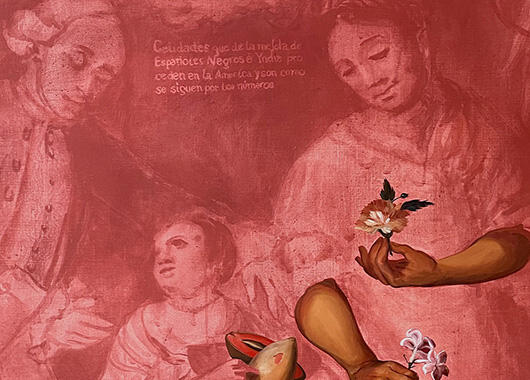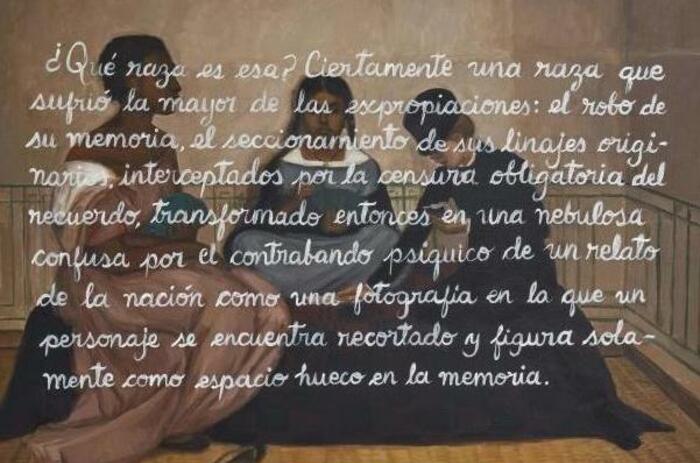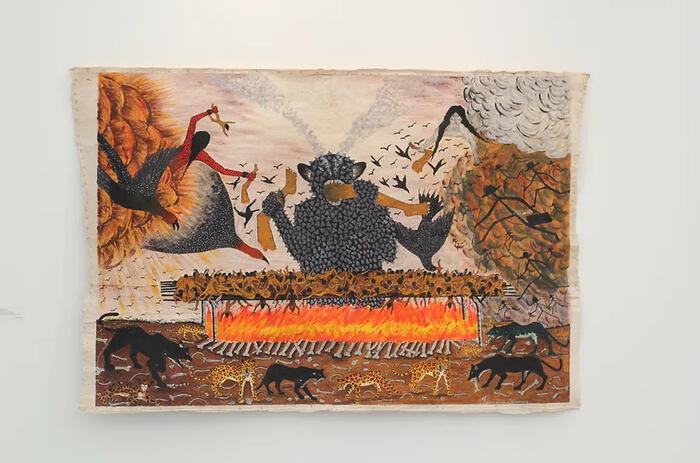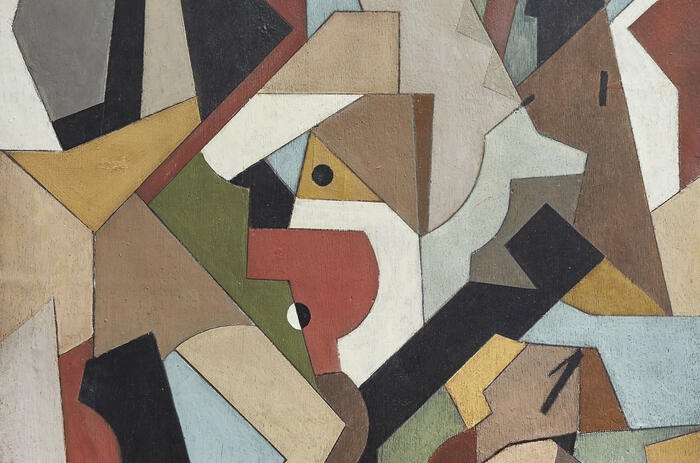EL ORDEN DE LOS FACTORES. SANDRA GAMARRA HESHIKI
EL ORDEN DE LOS FACTORES. SANDRA GAMARRA HESHIKI
Through painting, Sandra Gamarra Heshiki (Lima, Peru, 1972) questions the representation mechanisms of the art system and the museum as an ideological device. He resorts to copying to make available certain cultural artifacts that have been extracted from their contexts within the framework of the modern-colonial regime. The artist adopts a syncretic gaze where pre-Columbian, colonial, modern and contemporary material productions come into friction.

In The Order of the Factors, Gamarra Heshiki focuses on the genre of caste painting, popular during the 18th century in the Viceroyalty of New Spain. The pictorial series of 16 and 20 paintings illustrate racial classifications based on the reproduction of the family. Guided by the "purity of blood", they teach a hierarchical social organization with the aim of locating and perpetuating Spaniards and Creoles in power. Although the production of the series was concentrated in Mexico City and Puebla, there is only one known example made outside the current Mexican territory, in the Viceroyalty of Peru. This is the starting point from which Gamarra Heshiki establishes connections between the identity constructions of Peru and Mexico, in connection with his own biography. From there, it points to the violence that emerges from the intersections between race, class and gender in the colonial order.
The Western classificatory gaze systematized during the eighteenth century reaffirms hierarchies and justifies social, racial and gender differences as "natural" categories. It is also this gaze that constructs an otherness —different from the Western subject— through its exoticization. From this perspective, women and other racialized people are viewed as “inferior”, “primitive” or “backward” and, like nature, are assumed to be resources that can be exploited. Revisiting the order that gives rise to this violence allows us to detect its persistence in the present and imagine the possibilities to change it.





